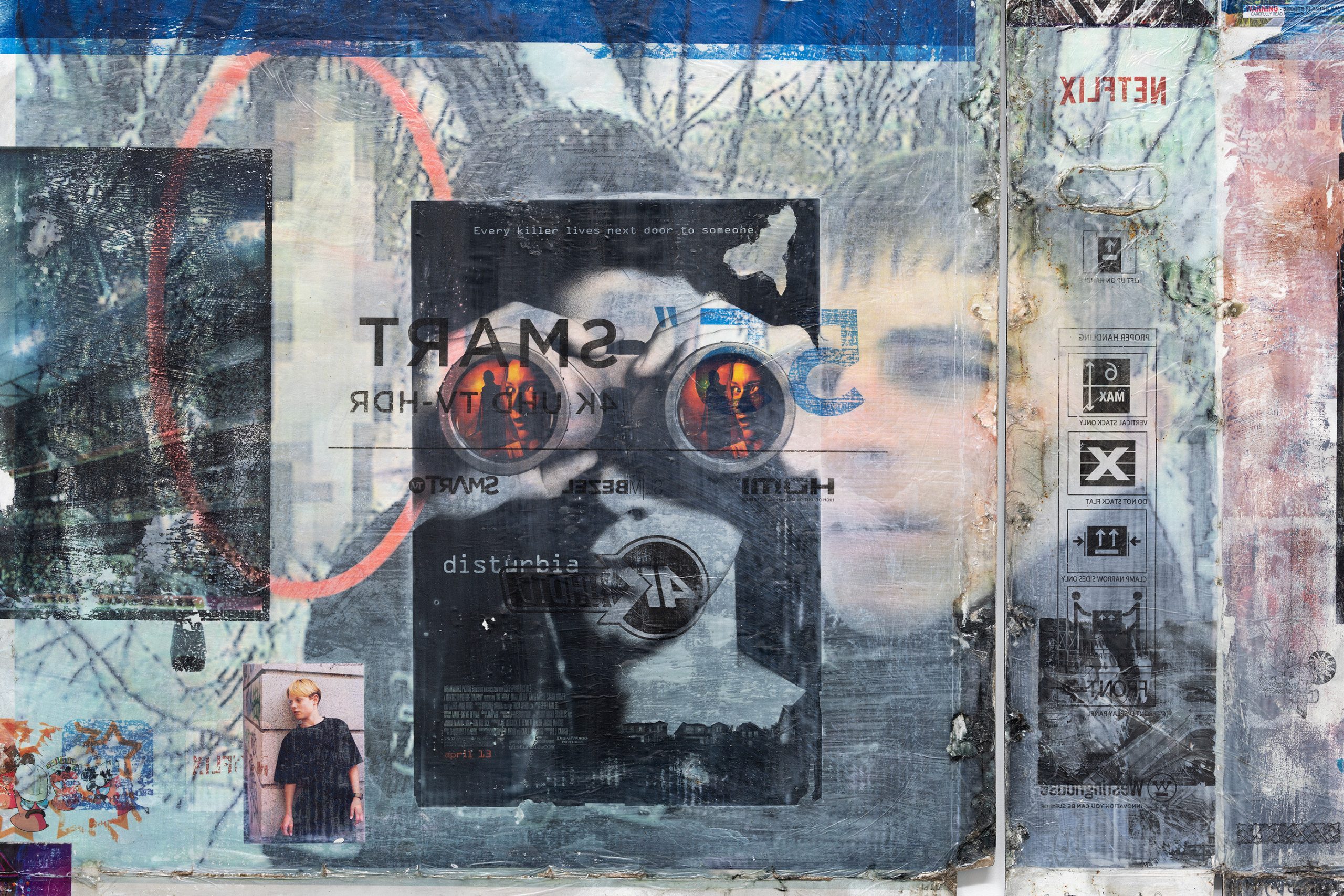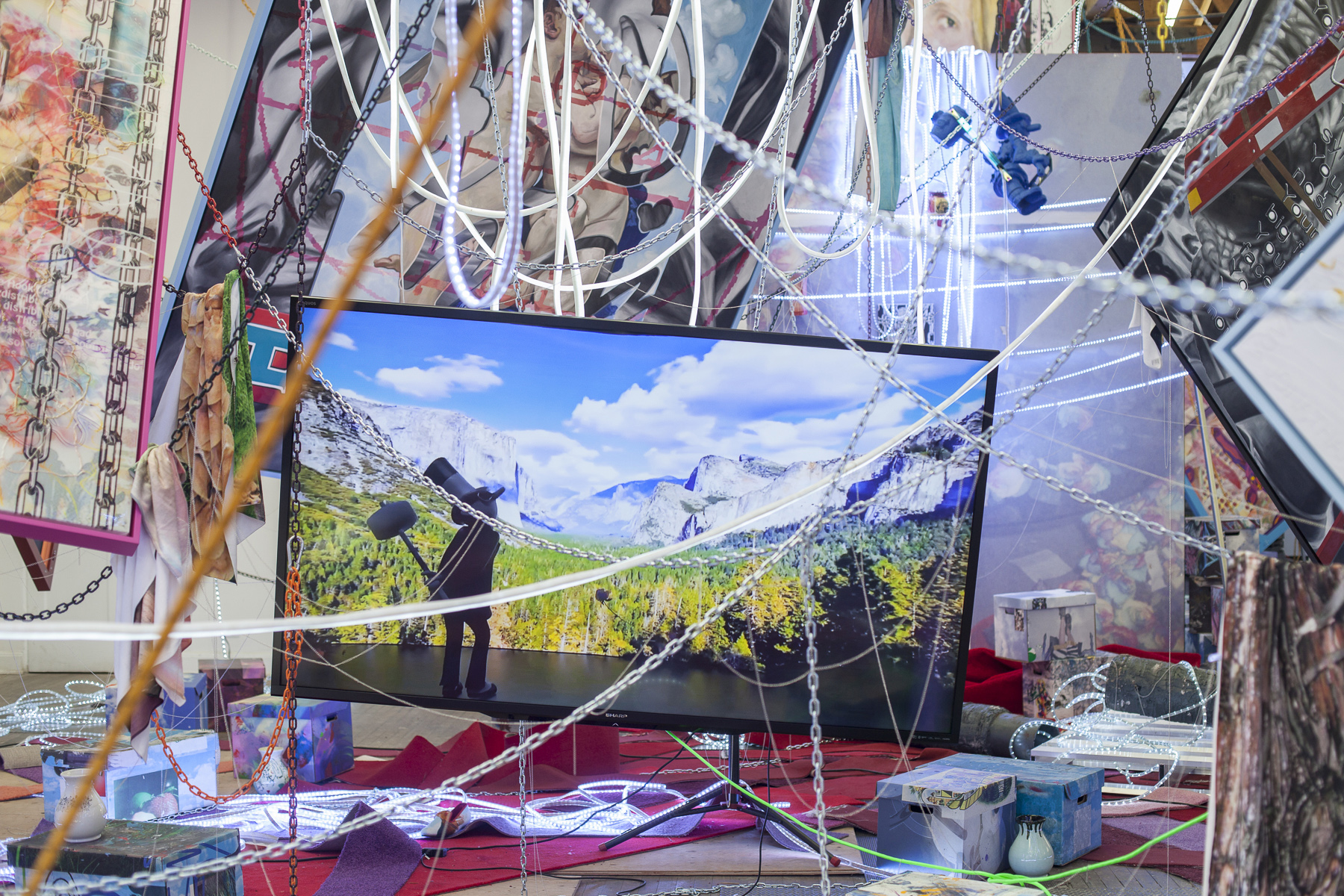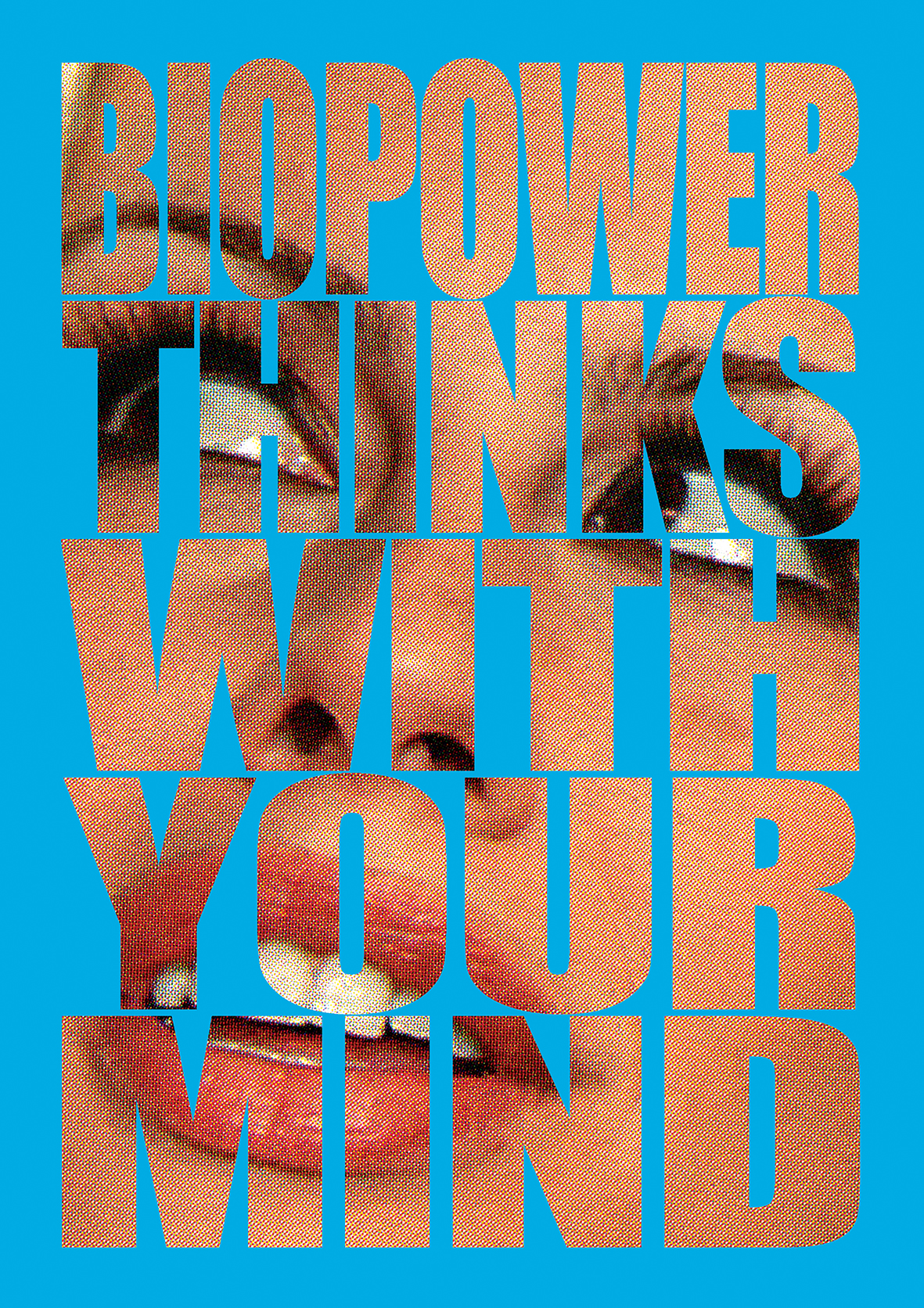Once, the purpose of knowledge was to give form to reality; then its aim became the production of possibilities; now it has become nothing but a risk manager. Once, we were producers; then we became consumers; now we are products. Once, the body’s strength was exploited to produce goods; then the energy of desire was exploited to consume goods; now one’s creativity is exploited to produce the self as a commodity. Once, we had children; then we desired children; now we have become children. Once, love was a pact of mutual support; then it was a desire; now it is the price at which we sell ourselves. Once, machines were a means to our ends; then they were the ends for which we were the means; now they are oracles that interpret signs and whose prophecies we interpret. Once, we were in a disciplinary society; then we were in a society of control; now we are in a risk society.
—Anna Longo, ‘Love in the Age of Algorithms’ (2020).

Looking back upon this era of Trump and Brexit, algorithms and shitposting, the alt-right and the dirtbag left, self care and incel forums, it is curious to wonder whether we have seen disinformation proliferate because of these developments. Or, perhaps they are only symptoms of an informational sphere long primed to legitimize baseless noise for political gain.
One thing is certain, the past four years have undoubtedly evidenced a shift in informational hierarchization, distribution and proliferation that foreshadows the future terrain of social and political interaction. Proprietary algorithms driving social media platforms and search engine analytics have been weaponized by foreign and domestic actors, acting as the new agents of geopolitical struggle and warfare. Legacy media and dark money collude and conspire to destabilize traditional informational flows with the noise of counter-narratives and conspiracy. The self, meanwhile, acts as a new site of production for surplus value, encouraged and rewarded for confessional use of social media as a new kind of evangelism and virtue-based politics. Though it would seem nearly hopeless to create a space for resistance within this current condition, a look into the growing political use of disinformation might actually provide an account of how to re-assert a new framework for collective struggle. It is part of the work required to reverse the microsegmentation of human experience in the digital realm.
It is by no means incidental that the cultural form of the internet meme has grown in potency and profile over the past 20 years. Originally a kind of banal, surrealist humor to be virally shared via email and instant messaging on the early internet, memes grew in sophistication during the George W. Bush years, especially after the September 11 attacks. This was precisely the moment when the internet became understood not just for its capacity to promote social, economic and interpersonal connection, but was increasingly seen as an emerging informational terrain itself.

In his 1976 book, The Selfish Gene, Richard Dawkins famously coined the term ‘meme’ to refer to the spread of ideas and thoughts between individuals akin to a kind of intellectual, self-replicating gene. The main characteristic of memes was not only their ability to replicate, but also their ability to spread as would a virus through hosts, with the ability to change thought and culture through such proliferation. Dawkins writes:
[M]emes should be regarded as living structures, not just metaphorically but technically. When you plant a fertile meme in my mind you literally parasitize my brain, turning it into a vehicle for the meme’s propagation in just the way that a virus may parasitize the genetic mechanism of a host cell. And this isn’t just a way of talking-the meme for, say, “belief in life after death” is actually realized physically, millions of times over, as a structure in the nervous systems of individual men the world over.
While Dawkins’ conception of the meme is somewhat more sophisticated than the more comic form of the internet meme as exists today, his observations of their ability to spread and shape behavior ring true forty years later.
Posted on the Flash-based entertainment website Newgrounds in 2001, the video for the enormously popular ‘All your base are belong to us’ meme now seems harmless in hindsight. Yet, when seen through another lens, it becomes an uncanny warning of the abstract power of the future informational dynamics of the internet, set to a hardcore gabber soundtrack. One of the earliest identifiable internet memes, ‘All your base are belong to us’ was popularized from a phrase taken from a poorly-translated Japanese video game called Zero Wing. It was then Photoshopped into all manner of contexts, like on Budweiser logos or Time magazine covers, spreading like wildfire on internet forums. Twenty years later, however, it would seem that this depiction of the viral spread of a meta-narrative bears a frighteningly accurate resemblance to a world where birthers, anti-maskers, 9/11 truthers and QAnon adherents reign throughout the highest levels of media and government.
The path down the road of narrowing, dividuated informational spheres that would foment the spread of conspiracy theory and disinformation was being solidified in the early 2000s. Denialism was in vogue, part of the Bush-era ‘business as usual’ mindset to fill shopping malls even as the World Trade Center continued to smolder, or while Iraq and Afghanistan were pummeled into oblivion. Seismic shifts on the geopolitical stage were shrouded with a focus on cheap credit, market expansion, and neocolonial wars, just as the days of empire began to wane for the Anglosphere, both in America and the United Kingdom. Meanwhile, the ‘ownership society’ was the slogan of the Bush-era policy of homeownership and consumer materialism that relied on the kinds of precarious financialized debt instruments that would tank the global economy in 2008.
It was this time when a neoconservative mindset sought to enforce late-90s optimism through coercive force. In a 2004 New York Times Magazine piece entitled ‘Faith, Certainty, and the Presidency of George W. Bush,’ journalist Ron Suskind reported on his conversation with a high level White House aide, suspected to be Karl Rove, who described the way the Bush administration believed it was bending history and reality to its own will. The aide said to Suskind, ‘We’re an empire now, and when we act, we create our own reality. And while you’re studying that reality—judiciously, as you will—we’ll act again, creating other new realities, which you can study too, and that’s how things will sort out. We’re history’s actors… and you, all of you, will be left to just study what we do.”
This account illuminates how the ‘post-truth’ era was already well at hand during the George W. Bush administration. With Bush’s portrayal of an Iraqi regime set on procuring uranium ‘yellowcake’ and harboring clandestine mobile WMD laboratories, the 2003 Iraq War was packaged, sold, and ultimately approved by Congress (also with Democratic support from Nancy Pelosi and Joe Biden) to an American public eyeing indiscriminate revenge on the Muslim world. Throughout the War on Terror, there was an insistence that virtuous intentions justified any means to achieve them, including the intentional manipulation of information, human rights violations at Abu Ghraib, and even ‘enhanced interrogation techniques’ such as torture. Knowingly manufactured and produced like any large-scale marketing campaign, the Iraq War and broader War on Terror were conspiracies of a higher order. The rationale was to ‘create new realities’ through effective use of PR, messaging and media manipulation, rather than assessing merit, truth, reason or justification.
The American invasion of Iraq took place in March 2003, and one year later, just as the Iraqi insurgency was set to boil over, the television program The Apprentice debuted and became one of the most popular shows in the United States. The show pitted a group of contestants against one another for opportunities working with Donald Trump’s organization, or with Alan Sugar in the case of the British version. It was part of a wave of competitive reality TV, where the weekly format involved the elimination of a contestant, fired from the boardroom, thrown off the island or ‘evicted’ from the group house.
This entertainment form was in perfect harmony with the doubled-down neoliberalism of the Bush and Blair years, where contestants would, according to Italian theorist Tiziana Terranova in Network Culture: Politics for the Information Age (2004), ‘perform their misery’ and thereby create monetary value. Writing on the spectacle of reality television, Terranova further analyzes its mid-2000s popularity in the context of ‘soft control’, or broadly speaking, the self-organizing tendencies wielded via mass communication platforms that create a system of social compliance.

[Reality television] demands then a self that is stripped down to the capacity to collaborate and compete by a strict set of rules operating within an economy of punishments and rewards, which determine the persistence or disappearance of the self as such. The group dynamics that are engendered by the distribution of the space, the set of initial conditions, the state of the cells within the system (the contestants), and the rules applied by a transcendent entity (Big Brother’s voice …) produce a kind of ‘emergent entertainment’. In reality game shows, the competition is, at an immediate level, for the prize that only one of the contenders will be able to gain. More fundamentally, however, the competition is for the fleeting, rather than scarce, flow of the audience’s attention and sympathy that from the outside keep impinging on the game and repeatedly push it towards a claustrophobic instability.
Terranova’s notion of soft control is in part explained by the choices made available through the individual’s interactions within the structure of the social medium. The case of reality television provides a scaled model of this kind of control, with its offerings of rewards, interpersonal scheming, dramas and eliminations; all behaviors which can be easily mapped onto the much vaster terrain of the internet and social media. On the internet, the addition of algorithmic learning and microtargeting only further shapes and intensifies the form and ferocity of interrelation and exchange, as individuals now go about their personal and political lives set adrift in the feed.
Seven years after The Apprentice debuted, in 2011, Donald Trump gave a speech at the conservative gathering CPAC that received such thunderous reception he began to take a run for office seriously. In order to build a following, Trump would begin utilizing disinformation and conspiracy theories to leverage his position. He began with propagating what has become known as ‘birtherism’, or a false conspiracy theory regarding Barack Obama’s heritage. Though disavowed when the then-president released his long-form birth certificate in April 2011, the damage was nevertheless done, as legacy media networks such as CNN, Fox News, MSNBC and the like had eagerly broadcast Trump’s speeches, legitimizing and normalizing these claims through sheer repetition. Disavowed or not, ‘birtherism’ and other Obama-era conspiracy theories were given daylight to metastasize on such channels like Facebook, 4chan, Reddit and the nascent Twitter. A disinformation morass would soon grow to infect and overwhelm the superstructure of the entire communications and political apparatus.
The mid-2010’s onslaught of media attention to the Trump and Brexit campaigns echoed what leftist American political theorist and communist Jodi Dean presented in her 2005 essay ‘Communicative Capitalism: Circulation and the Foreclosure of Politics’. Dean sketches out a fundamentally new model of how capitalism operates within advanced communication networks, where circulation is the ultimate measure of informational success, as opposed to whether a message is understood, accurate or even legible.
In communicative capitalism, however, the use value of a message is less important than its exchange value, its contribution to a larger pool, flow or circulation of content. A contribution need not be understood; it need only be repeated, reproduced, forwarded. Circulation is the context, the condition for the acceptance or rejection of a contribution. Put somewhat differently, how a contribution circulates determines whether it had been accepted or rejected. And, just as the producer, labor, drops out of the picture in commodity exchange, so does the sender (or author) become immaterial to the contribution. The circulation of logos, branded media identities, rumors, catchphrases, even positions and arguments exemplifies this point. The popularity, the penetration and duration of a contribution marks its acceptance or success.

Across the increasingly flat, horizonless terrain of the internet, legacy news networks, Tweets, ‘deepfakes’, memes, and conspiracy blogs posing as news sources all jockey for attention on a level playing field. Here, there is no class of informational hierarchy; simply what is shared, liked, promoted or engineered to perform best will appear most frequently. The danger of interacting in this space is not how vital the algorithm is to driving specific kinds of communication platforms like social media, but rather forgetting that algorithmic learning and informational flows provide a fundamental architecture that undergirds much of the overall communications network. Memes, in their viral, near-biological capacity to spread as observed by Dawkins, can become potent vectors of dis-informational proliferation through the machinic mediation of algorithmic logic. To put it simply, the right information, in the wrong hands, becomes very dangerous to those who know how to wield such communicative weapons effectively on a system built on circulation rather than comprehension.
During the United Kingdom’s EU referendum in July 2016, many forces within or adjacent to the Vote Leave campaign, such as UKIP, propagated a series of conspiracy theories that Brussels was destined to overturn the sovereignty of the United Kingdom. Or, EU powers were conspiring with the Remain campaign to rig the referendum. Or, non-British Europeans were being enlisted to cast fraudulent votes. Months later, Donald Trump won the American presidential election bolstered with a similar slate of conspiracy theories that spoke of a ‘Deep State’ of actors that controlled a political establishment he was determined to tear apart. There was ‘Pizzagate’, playing into the Deep State narrative, which detailed underground pedophile rings that were harbored in places including the basement of a DC-area pizza parlor. So too did the ‘Clinton Body Count’ conspiracy theory agitate long standing right wing suspicions of high crimes committed by the Clinton political network since the 1990s, and amplified by the real-life email server controversy investigated by the FBI. QAnon has emerged as the latest iteration of these grand conspiracy theories, which merges the narrative threads about the Deep State, a ‘Plandemic’ engineered by a malevolent medical and scientific establishment, as well as ongoing sexual exploitation run by Democrats and the corporate elite.
It should be noted that in 2020, one of the most telling fusions of conspiracy theory with communicative technologies has been the willingness of an array of wellness influencers that have taken up the mantle of the QAnon cause. While the reasons for this recent trend are debated, there are clear parallels with the existing anti-vaxxer movement and the long-held belief that the government is trying to overstep individual freedom and dictate what one does with their own body. In this growing arena, notions of ‘self care’ are conflated with the belief of the fundamental sovereignty of the mind and of the body against any form of social or political regulation. Ironically, there seems to be little concern in these circles for the social media algorithm’s capacity to exert soft control over the decisions and information available to the user.
Though early adopters of the form, the political Right and their online enablers have not been the only forces trafficking in disinformation and conspiracy theory. After Trump’s election, a large section of the American Left became convinced that ‘Russiagate’ was true, or that Trump was essentially a Manchurian candidate installed via a highly-sophisticated Russian interference campaign in the election. It was suggested that the Kremlin had high level ‘kompromat’ (the pee tape) to ensure his compliance. While the Russia conspiracy was rooted in truth—units of the Russian military intelligence arm GRU did indeed execute a large-scale hacking and disinformation campaign to Trump’s benefit—many commentators also noted how Democrats used the Russia allegations to shift blame away from a poorly-run Clinton campaign. One particularly fanciful Russiagate theory posted on Twitter even went so far as to speak of a ‘Grand Bargain’, whereby Russia, Saudi Arabia, the Emirates and Israel all colluded to get Trump elected. In this grand narrative, the $450 million sale of Leonardo da Vinci’s ‘Salvator Mundi’ from a 2018 Christie’s auction was actually an elaborate means of payment from the Arabs to the Russians for services rendered.
(THE GRAND BARGAIN) If the “grand bargain” theory of the Russia case is accurate—and it is—we’d expect to see MBS pay Rybolovlev hundreds of millions in laundered money to pay Russia for the social media campaign the Saudis promised Jr. And hey—guess what? https://t.co/3Cc5YnE2mI
— Seth Abramson (@SethAbramson) November 20, 2018
Much is now being written about the ‘crisis of conspiracy theories’ and what can be done to stop them. Nearly every newspaper and online site seems to have commissioned a think piece about the topic, but much of it comes down to wishful thinking. That is, we will simply return to ‘normalcy’ once the COVID pandemic has been mitigated and Trump is out of office. It is more likely, however, that conspiracy networks will remain in place, especially as political polarization seems cemented in for the near future. Jean Baudrillard, of course, observed the hyperreality of postmodern informational systems as one where image and appearance reign supreme. As Mark Fisher simply put it from Capitalist Realism, ‘All that is solid melts into PR’. Terranova helps explain weaponized information further, terming the notion of a ‘bioweapon’ as those communicative vehicles, such as an algorithmically-targeted conspiracy theory, which allow a domination of certain information and images above all others.
This is the sense in which the hyperreal does not really involve a metaphysics of being and appearance so much as a kind of information ecology which also includes a dimension of warfare – a warfare to determine the differential power and dominance of some types of images over others. It is no longer a matter of illusion or deception, but of the tactical and strategic deployment of the power of affection of images as such. It is no longer a matter of truth and appearance, or even of the alienating power of the spectacle as ‘opium of the masses’, but of images as bioweapons, let loose into the informational ecology with a mission to infect.
Tactically, misinformation on the internet provides three advantages for its user. The first is the ability to use algorithmic flows to dominate the informational terrain, and overwhelm any position with an assault of baseless messages. Second, conspiracy theories, while not factually accurate, do accurately manipulate the political passions at play: Trump is in bed with Russia, Clinton is part of a corrupt establishment, Brussels is too bureaucratic, liberals are feckless, conservatives are fascists. The third advantage of using misinformation is the method in which conspiracy theories, false information and mischaracterizations provide for a kind of decoy for the opposition, especially for the Left.
It has been recently observed how liberal voices in media spend inordinate amounts of time online or on-air disproving baseless lies of the opposition. It’s something which CNN’s Daniel Dale has become famous for in his lightning rounds of fact checking Trump. But the liberal willingness to play the ‘enlightened’ intellectual superior is also a willingness for self-distraction. As Adam Kotsko wrote in a 2012 blog entry entitled ‘Weaponized debate’, he neatly breaks down how conservative and right wing messages are aimed at achieving strategic goals, not intellectual triumphs.
It’s true that conservative ideology doesn’t make sense if we look at its stated rationales, which are different for different topics. The stated rationales, in fact, function as a kind of weapon against liberals, who jump at the chance to engage and disprove — and will happily waste infinite amounts of time doing so. It’s like a drug for a certain type of ‘reasonable liberal’: they’re showing their broad-mindedness by engaging in dialogue with their ideological enemies, and they’re showing their intellectual superiority!
What if, instead, we looked at stated conservative ideology as a part of a more or less consistent strategy? Not in the conspiracy-theory sense (though conservatives do explicitly plan much more than liberals tend to), but in the Foucauldian ‘conspiracy theory without conspirators’ sense. Obviously the goal of conservatism is to reinforce and, if necessary, reassert ‘traditional’ power structures. In the family sphere, that’s the father. In the economic sphere, that’s the boss. In the government sphere, that’s the police officer or the general (as opposed to the social worker).
The rationales for each of these spheres are different and provide tons of fodder for sarcastic tweets, but if we view it in terms of strategy, they all make perfect sense. Taken together, they serve to blame the victims, assert that the powerful are powerful for moral reasons, and then claim that the role of government is to endorse and reinforce the morally-discovered power structure rather than futilely try to disrupt it. The arguments might clash on a superficial level, but their effects are perfectly coherent and rational once the goal is granted.
Kotsko’s observations on the nature of political exchange online are worth repeating. The Right has long been self-aware in how the use of propaganda and smokescreens are essential to further their own ends. Liberals, of course, often cast themselves as champions of free exchange of ideas based on reason and fact. Yet, when the open networks of exchange are themselves undermined by, or even prejudiced towards, the spread of disinformation and conspiracy, a new politics and method of resistance should be sought rather than assuming that, somehow, ‘truth’, ‘goodness’ or ‘normalcy’ will prevail.

In her conclusion to Network Culture, Terranova offers a model of how to properly utilize the forces at play in this informational terrain, recognizing that within the harnessing of collective passions lies a capacity to produce solidarity for the online masses.
What this ultimately boils down to is a capacity to synthesize not so much a common position (from which to win the masses over), but a common passion giving rise to a distributed movement able to displace the limits and terms within which the political constitution of the future is played out. What this effort starts with, however, is not Reason, in the sense of a universal faculty that, thanks to interactivity and a decentralized distribution of communication capabilities, finally resurfaces after a long slumber. As with the masses, this political mode cannot but start with affects – that is with intensities, variations of bodily powers that are expressed as fear and empathy, revulsion and attraction, sadness and joy. It does not see such affects as an aberration of communication (as the ‘communication is making the world less tolerant’ thesis would argue) but as their beginning – as expressing the zero degree of the political as such.
The revolutionary idea of biopower that Terranova identifies here is rooted in the axiom that communication networks have grown so sophisticated in their ability to segment, spread, dividuate and pervade, that communication is no longer done at the level of the rational mind, but rather at the level of emotional affect. Memes, conspiracy theories and disinformation proliferate not because of their intellectual appeal, but precisely the opposite; in their ability to activate outrage or sympathy, collaboration or competition, just as reality television demonstrated roughly 20 years ago. When merged with insights provided by Dean’s concept of ‘Communicative Capitalism’, it becomes clearer how the entire superstructure of the late capitalist communications network is lubricated, fed and propelled by the monetization of such affective interaction.

Internet networks have become feeling networks, and for any effective resistance against the domination of capital and carceral interests through such platforms, the goal must be to accurately identify and exploit the deterritorializing nature of the network from where a political commons may be constructed. It is not by mirroring the Right, through countering with tactics like trolling and disinformation, but rather advocating for those fundamental desires—among others, housing, healthcare, justice and education—which guide, shape, inform and give rise to political thought. This is not far from what Fisher wrote in his unfinished introduction to Acid Communism:
Instead of seeking to overcome capital, we should focus on what capital must always obstruct: the collective capacity to produce, care and enjoy. We on the left have had it wrong for a while: it is not that we are anti-capitalist, it is that capitalism, with all its visored cops, its teargas, and all the theological niceties of its economics, is set up to block the emergence of this Red Plenty.
It is time to rid ourselves from the daily projections of fear, nightmare, deprivation and rumor that are unceasingly exacted by the algorithm upon the individual. Do not assume the pious notion that fact, virtue and truth are destined to somehow prevail–the moment requires us instead to emancipate ourselves against network logic, to unleash our dreams upon the feed, and to fundamentally redefine what is not only probable, but what is politically, socially and economically possible.**













